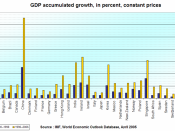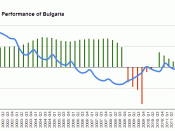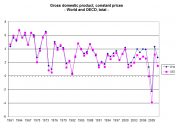There are many measures of economic activity. Indicators are used to review, predict and compare performance. But ultimately 'A society is judged by how it treats its poorest members,' what is the impact on the populace as a whole? Are measures worthwhile and internationally comparable?
Quality of life is subjective. Attempts have been made to collate a 'domain' of items to facilitate common comparative time and international measurements. But individual circumstance, perception and cultural bias make absolute outcomes improbable. What is agreed is that both macro and environmental economic factors impinge. Whilst deviating slightly the UN Components of level of living' (1954), Drewnowski's 'level of living index' (1974), and the OECD 'areas of social concern' share key common indicators These factors cover consumption flows, net societal accumulation of resources, income distribution and economic security.
Economic growth is a quantitative measure of increase in a nation's productivity output by means of income.
It can be divided into labour, Capital stock and technical progress. Labour growth can be influenced by birth rates, migration and participation levels within the nation. Increased life expectancy can have a negative, impact on the workforce ratio, increasing the welfare burden. Economic growth must exceed birth rates to minimise this. Likewise encouraging women into the workforce and increasing the retirement age can manipulate the ratio.
Capital stock must increase to multiply the productive capacity. Improvements in technical capability such as the implementation of machinery further increase economies of scale. Reduced unit costs increase potential for profitability that can be reinvested in Capital and technology. Government intervention via monetary and fiscal policy can influence development in these areas. Economic growth leads to increased standards of living, raising real income per head, that has the knock on effect of raising consumption, thus creating demand Government tax revenue increases can spent...


